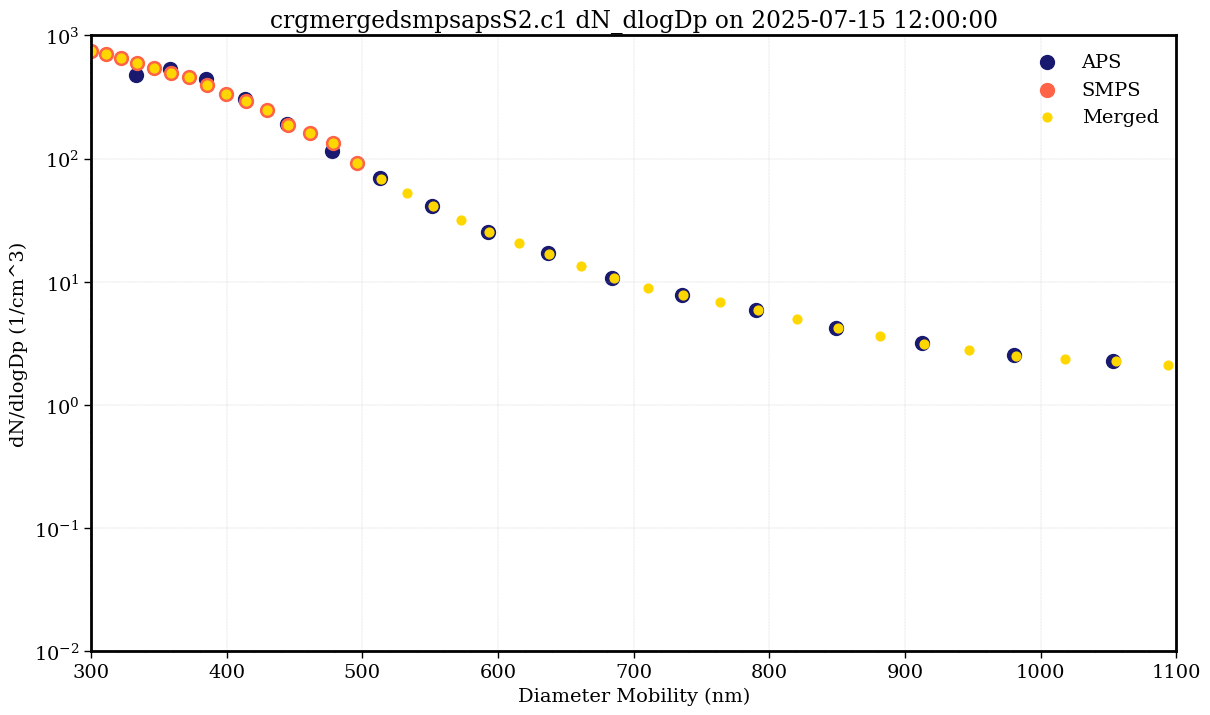Merged Aerosol Size Distribution Data Available From Additional Sites
Published: 22 September 2025

A value-added product (VAP) that merges aerosol size distributions from the scanning mobility particle sizer (SMPS) and aerodynamic particle sizer (APS) is now in production for the Bankhead National Forest (BNF) and Eastern North Atlantic (ENA) atmospheric observatories, and for the ongoing Coast-Urban-Rural Atmospheric Gradient Experiment (CoURAGE). Production data are reviewed and verified as compliant with the Atmospheric Radiation Measurement (ARM) User Facility’s data standards and are processed automatically or manually on ARM production servers.
ARM currently operates the SMPS, APS, and at least two other instruments that measure a portion of the ambient aerosol size distribution. Most users are interested in the entire size distribution or a portion of the size distribution that extends across the measurement range of multiple instruments. However, merging these distributions is not trivial because the instruments all employ different measurement principles and, in most cases, report data as a function of different representations of the aerosol diameter. The MERGEDSMPSAPS VAP is useful for scientists who need a representation of the aerosol size distribution in the particle diameter range of approximately 10–20,000 nanometers.
Scientists can use the VAP for calculating aerosol scattering and mass loading, estimating the impact of aerosol on clouds, and verifying aerosol-related quantities in models.
MERGEDSMPSAPS production data are now available as daily netCDF files for:
- the BNF main site in Alabama from November 25, 2024, onward
- CoURAGE’s rural supplemental site (S2) near Mount Airy, Maryland, from January 3, 2025, onward
- the ENA observatory in the Azores from January 25, 2024, onward.
New VAP data are made available when required SMPS and APS input data become available.
More information about the VAP, including its technical report, is available on the MERGEDSMPSAPS web page.
Access the data in the ARM Data Center. (To download the data, first create an ARM account.)
Please contact ARM translator John Shilling or VAP developer Maxwell Levin to ask questions, report data issues, or provide feedback to help improve this product.
Data can be referenced as doi:10.5439/1871375.
Keep up with the Atmospheric Observer
Updates on ARM news, events, and opportunities delivered to your inbox
ARM User Profile
ARM welcomes users from all institutions and nations. A free ARM user account is needed to access ARM data.


















